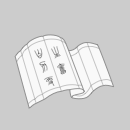
本土设计
全新正版 极速发货
¥ 133.24 6.7折 ¥ 198 全新
库存9件
广东广州
认证卖家担保交易快速发货售后保障
作者崔愷 著
出版社知识产权出版社
ISBN9787513041560
出版时间2016-05
装帧平装
开本16开
定价198元
货号1201316902
上书时间2024-08-09
- 最新上架
商品详情
- 品相描述:全新
- 商品描述
-
作者简介
崔愷,1957生于北京,1984毕业于天津大学建筑系,获硕士学位。现任中国建筑设计研究院(集团)副院长、总建筑师,中国工程院院士,国家勘察设计大师,本土设计研究中心主任。 曾获得 “全国很好科技工程者”(1997)、“国务院特殊津贴专家”(1998)、“国家人事部有突出贡献的中青年专家”(1999)、“国家百、千、万人工程”人选(1999)、“法国文学与艺术骑士勋章”(2003)、“梁思成建筑奖”(2007)、保加利亚靠前建筑艺术院名誉教授(2014)等荣誉。 作为中国建筑学会常务理事、天津大学教授、清华大学双聘教授、中国科学院大学教授和多家专业杂志编委来推动学术研究。所主持的工程项目获得国家很好工程设计金奖1项,银奖9项,铜奖5项;获得亚洲建协金奖2项,提名奖1项;中国建筑设计金奖2项,银奖2项;中国威海靠前建筑设计大奖赛金奖2项,银奖1项,铜奖2项;靠前铜业学会一等奖1项,三等奖1项等专业设计奖项;在新中国成立60周年中国建筑学会评选的三百多项建筑创作大奖中获得九项大奖。 近两年受邀参加香港“2011-2012香港深圳城市\建筑双城双年展”(2012)、“从北京到伦敦”——当代中国建筑展(2012)、西岸2013建筑与当代艺术双年展——2000-2013中国当代建筑回顾展(2013),并在北京举办“十年·耕耘——崔愷工作室十周年建筑创作展”(2013),与《世界建筑》杂志共同举办“崔愷作品巡展”(2013);出版著作《当代建筑师系列——崔愷》(2012)。
目录
序
关于本土
自然主题
敦煌莫高窟游客中心
中国杭帮菜博物馆
中信金陵酒店再造自然
泰山桃花峪游客中心“泰山石”
历史遗产
无锡鸿山遗址博物馆
蓬莱古船博物馆
欧美同学会改扩建
前门23号
西安大华1935
地域文化
玉树康巴艺术中心似与不似之间:由现实理性而理想
中华人民共和国驻南非大使馆、驻开普敦总领事馆国家的门脸儿
中信泰富朱家角锦江酒店园子·院子·框子
苏州火车站站房浅谈火车站的地域特色
北川文化中心本土文化的重生
重庆国泰艺术中心
山东省广播电视中心叠石释义
有机更新
北京外国语大学校园改造
南京艺术学院校园改造南艺的“难”“易”
神华集团办公楼改扩建
城市生活
中间建筑B区、A、F区中间建筑B区
昆山市文化艺术中心
德阳市奥林匹克后备人才学校
江苏建筑职业技术学院图书馆设计的逻辑
北京奥林匹克塔我们的奥运后的奥运工程
北工大软件园二期B、C、D地块
北京工业大学第四教学楼组团
思考·言论
中国建筑发展的伦理回归
搭建创新的平台
浅谈建筑师教育
1999—2009中国建筑创作回顾
学坊随笔
本土设计的思考与实践——直白的真诚
新型城镇化与绿色建筑新理念
关于北川新县城建设的点滴心得
文化的态度——在中国建筑学会深圳年会上的报告
留住乡愁
同行的评价
现代化与地域主义——对崔恺作品的一些思考尤根·罗斯曼
崔恺:抽象现实主义——来自当代中国的“本土”建筑朱剑飞
本土设计再思考——建筑同仁在崔愷、潘冀建筑思想对谈中的讨论
“两岸·追问·回潮”——崔恺、王维仁对谈
耕耘——十年展
后记
年表
内容摘要
《本土设计II》是崔愷院士在2009年出版的《本土设计》学术著作之后的又一部兼有理论性和实践性的学术著作,国家科学技术学术著作出版基金资助出版。其中包括了近几年来崔愷院士在“本土设计”理论上的研究成果和在这一理论指导下的一批很好建筑作品,通过连续的设计实践及学术演讲、研讨、对话与写作等方式交流,不断深化和完善本土设计理论。本书汉英双语对照,正文采用具有再生环保特性的超感纸印刷,封面采用有建筑材料质地的特种纸进行装帧,并以设计底图常用的硫酸纸印制创作过程中的手绘草图作插页,全书数百张精美图片,四色印刷。
主编推荐
精彩内容
很高兴看到崔愷院士第二本关于本土设计的专著《本土设计Ⅱ》将付梓出版。本书汇集了作者近年来以“本土”理念创 作的一批重要的工程项目,同时还配以作者及其他建筑师关于本土设计及崔愷创作思想方面的讨论文章,图文对照,读起来很有兴味。执业建筑师与专门搞建筑理论、评论、策划的理论家不同,也与教书育人的建筑教育家不同,最终还是靠建筑作品,当然是那些优秀的乃至有个人风格和范式的代表作品来说话。
中国正处在经济快速增长、城镇化急剧推进的历史性的重要 发展机遇期,大规模的建设活动同期并行,这就为建筑师提 供了广阔的用武之地,每个建筑师都可以拿出一批批自己设 计的项目。毋庸讳言,这里虽然不乏精品力作,但大量的是无精打采的,乃至摹西仿古、缺乏思想内涵和文化成色的平 庸之作。特别是其中的一些规模体量巨大、占据重要区位、具有重要纪念意义、渴望成为标志性的重点案例,做得非但没有出彩,反倒令人生厌而饱受诟病。究其原因,可能不是 资金、不是技术、不是材料,往往是创意理念和设计观念方 面的问题。所以,很有必要讨论,要创作出一个好的作品,关键在哪里。做事不可忘记的古训是“行成于思”,设计同写文章一样,必须“意在笔先”,这里的“思”和“意”,对建筑创作来 说,就是构思和创意。相信大多数建筑师都不是先研究好了 自己的理论(当然理论也可以学习和借鉴)才去做设计,但可以肯定,他们都是以某种思路和理念作指导,去研究如何处理各种建筑要素之间的关系,以及选择建筑形式的美学取向和确立建筑意象的文化表达。应该指出的是,这些理念和思路其实就是建筑师长期学习、研究、实践、总结的理论储备,是存在于建筑师脑海里的意识结晶,已经具备了理论形 态。所以,对待理论的态度,大可不必把它搞得那么神秘而 高不可攀,更不要以为理论离我们有多么遥远,其实我们总是自觉或不自觉在运用某种理论来引领设计,指导实践。
纵观建筑设计史,大凡一定时期的代表人物和设计大家,除了有标志性的作品之外,往往还都提出一些独创的观点、理论,或主义之类的主张,成为其设计创作的理念和 原则。诸如,密斯·温德鲁以“少就是多”的名言表达了 自己对现代建筑基本构想和一贯坚持的减少主义的特色;赖特的“有机建筑”“草原建筑”;战后日本建筑师提出 的“有机更新”“新陈代谢”,到当代的“负建筑”;以及与本土设计相关联的“现代乡土建筑”“地域主义”建筑、“批判的地域主义”等,都是我们耳熟能详的。研究 这些观点、理念、主张、主义,我们会发现,任何一种理 论的提出、完善和发展,都是为了解决现实中存在的问题,而具有鲜明的问题导向性、针对性和目的性。从这一 观点出发,可以引申为,当现实中的问题积累到一定程 度,甚至达到了流弊毕现的时候,则预示着一种新的理论或主张将要出现和产生,正如科学社会主义的诞生,是源于当时欧洲资本主义基本矛盾所引发的周期性经济危机和 阶级矛盾的激化。那些新的矛盾、新的问题的出现,在催生理论的突破与创新。这种突破和创新主要体现在,通过 认真研究问题之所在和主要症结,运用已有的知识积累,汲取前人的优秀思想成果,通过思索和探讨,进行归纳和 提炼,使其升华和提高,从而可以更准确地阐释现实,更有效地指导实践。这一点,无论是国家、社会,经济、文化;还是科技、教育,学科、专业,莫不如此。就城市与建筑而言,不论是社会还是业界,当前颇有微词的指向是城市的形象雷同和特色殆尽,以及建筑的或平庸、粗鄙、拙劣,或求洋、描古、作怪,这种状况让业界充满着焦虑 和思变,也引起了高层的关注和期待。因此,我们必须以 高度的文化自觉与自信,在吸收传统建筑文化精髓和境外优秀规划设计理念的基础上,以文化自强的勇气,不断推 动建筑设计的创新和发展,创作出具有浓郁地方特色、鲜 明民族风格和强烈时代精神的建筑作品,这一重任已历史地落到当代建筑师的肩上,而且一些有责任感的建筑界同仁已经为此在建筑设计中积极探索并在创作实践中寻求理论的突破。
崔愷是我国自己培养出来的本土建筑师,也是在改革开放中 成长起来,在开放竞争的设计市场中脱颖而出的优秀建筑师。在同龄的中青年建筑师中,他主持设计并付诸实施的工 程项目是比较多的,其中不少项目屡屡获奖,受到各方面的好评,在当代建筑设计界产生着重要的影响。在繁忙的建筑创作生涯中,他乐于学习、勤于思考、善于总结,以其切身 的感悟,提出了“本土设计”的理念,确立了本土设计的基 本策略,并以此指导他和团队的创作实践;对接手的工程项目,按照“本土设计”的立场和方法,去研究分析,找出个案具体的对策,拿出合乎逻辑的构思,提出业主和社会认可的方案。
关于“本土设计”的内涵和要点,作者在相关文章和场合已有表述,力求全面而又扼要地提出纲领性的要义,搭起框架性的体系结构,使这些成果能为深入探讨和不断完 善“本土设计”这一设计理念打下基础。相信在这个基础 上,有关“本土设计”的研究和讨论还会继续和深入下去,“本土设计”本身亦将日臻科学和完善,正如作者自己所言:“本土设计的立场和方法还是比较可行、实用的,而它 的不成熟、不完整、不系统也在所难免,特别希望各位同行 给予指教、补充。”这里我们希望崔愷院士能秉持“本土设计”的理念,在建筑创作上能有更多体现“本土”内涵的精品佳作问世,并继续“本土设计”的深化研究,在理论建设上亦有建树。
是为序。
宋春华
2015.6.22
It is a pleasure to learn that Land-Based Design II, the second monograph by Academician Cui Kai on Native Design will be published soon. This book covers a number of important projects created by the author based on Native Design in recent years, and it also contains discussion articles by the author and other architects on Native Design and Cui Kai’s creation-guiding ideas. With articles illustrated by pictures, this book is very interesting.
Practicing architects are different from architectural theorists, critics and planners, and they are also different from architectural educators, because their achievements are evaluated on the basis of their outstanding representative architectural works. China is undergoing rapid economic growth and fast urbanization, and large-scale construction projects are under way, which provides many opportunities for architects. Needless to say, although there are many excellent works, a larger number of works are inanimate or even mediocre, just following the Western or the ancient styles and lack of cultural connotations. In particular, some large key projects which are located in important places, of memorial significance and should have become landmarks were not brilliant, but boring and heavily criticized. This phenomenon is probably not caused by funding, technologies or materials, but mostly caused by creative and design concepts.
Therefore, it is necessary to discuss what is the key to the creation of a good work. “Success depends on forethought” should be borne in mind. Designing is like writing articles in that “working out the plot before putting pen to paper” is very important. In terms of architectural creation, “forethought” and “plot” are“conception” and “creative ideas”. It is believed that most architects do not design until thoroughly studying theories (of course, theories can be studied and drawn upon). But surely, they are guided by certain ideas and concepts to study how to handle the relationships among architectural elements, choose the aesthetic orientations of architectural forms, and establish the cultural expressions of architectural images. It should be pointed out that these concepts and ideas are theoretical reserves studied, practiced and summed up by architects for a long time. They are already in architects’ mind, and they are basically theories. Therefore, theories should not be deemed as mysterious, unattainable or faraway. Actually, we are always consciously or unconsciously using some theories to guide our designs and practices. In the history of architectural designs, most design masters in certain eras not only have representative works, but also put forward some original ideas, theories or doctrines which constitute their concepts and principles of their designs. For example, Mies Van der Rohe advocated “less is more” to expressed his basic conceptions of modern buildings and his consistent minimalism; Frank Lloyd Wright put forward “organic architecture” and “prairie architecture”; post-WWII Japanese architects proposed “organic renewal”, “metabolism” and contemporary “Kuma negative construction”etc; and some concepts (”modern vernacular architecture”, “regionalism architecture” and “critical regionalism architecture” ) are related to land-based rationalism. It is easily found that these ideas, theories or doctrines were put forward, developed and improved to solve problems in reality. They are strikingly problems-oriented. As can be inferred from this point of view, when problems in reality are accumulated to a certain extent or even become widespread, a new theory or proposition is likely to emerge, just as scientific soism rose from the cyclical economic crises and intensification of class contradictions caused by the basic contradictions of European capitalism. These new contradictions and problems contribute to theoretical breakthroughs and innovations. These breakthroughs and innovations are mainly reflected in the serious study of cause and main cruxes of problems, refining and improvement of existing knowledge and outstanding thoughts to more accurately,so as to interpret reality and guide practices effectively. This is true in all aspects of the human society. In terms of cities and buildings , both society and the architectural industry criticize that many chinese cities are identical and without characteristics; many buildings are mediocre, coarse or following the Western or the ancient styles. Faced with this situation, the architectural industry is concerned and longing for changes, and the leaders at higher levels are paying attention and expecting improvements. Therefore, in addition to the absorption of traditional architectural cultural essence and overseas outstanding planning and design concepts, we should give full play to our culture to innovate and develop architectural designs, create architectural works which reflect strong local characteristics, striking national styles and the characteristic temper of the era. This important task should be fulfilled by chinest modern architects, and some responsible architects have been exploring for theoretical breakthroughs in practices.
Cui Kai is a native architect, and he stands out in the openand competitive design market since the reform and opening up. He has taken charge of many projects and won many awards. He is highly recognized and influential in the contemporary architectural design circle. He is a li
相关推荐
— 没有更多了 —





















以下为对购买帮助不大的评价